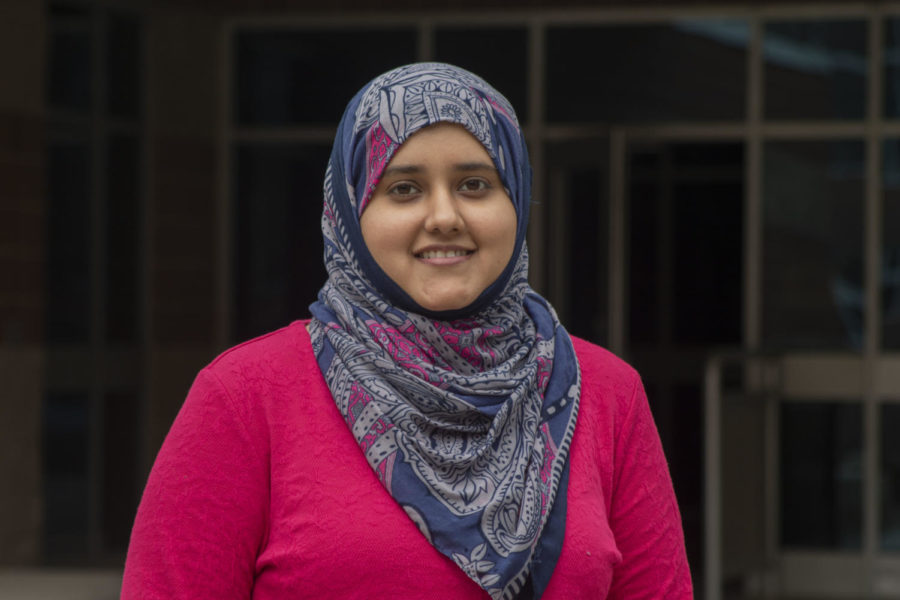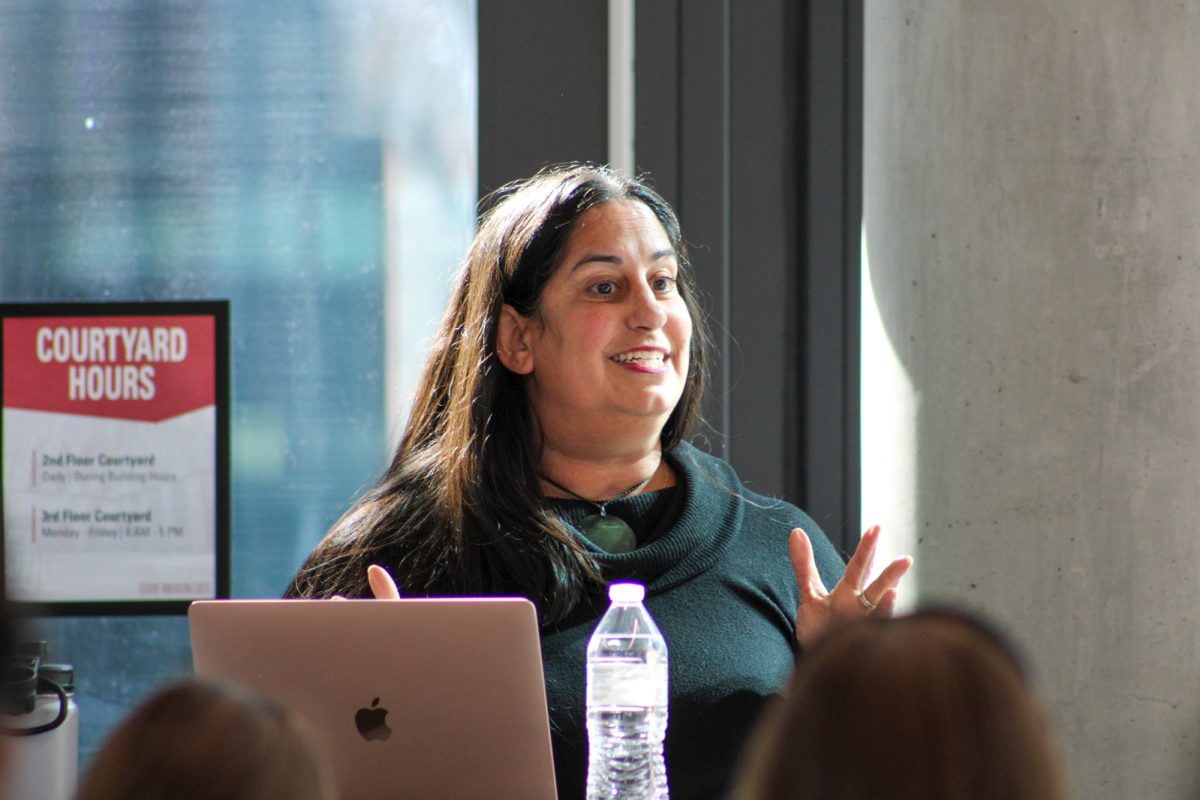Muslim students shed light on the hijab
April 15, 2018
Freedom of religion is central to the American experience. It’s right there, written within the first line of the Bill of Rights. Citizens are allowed to express their faith openly. However, some Americans have mixed opinions about one form of religious expression: The Muslim hijab.
When mass media outlets present stories about Muslim women, they often report an ongoing clash of ideals. One side purports that Islam’s doctrines are oppressive when they command women to dress modestly, and others say that wearing the traditional garments in an expression of their freedom and not a restriction of it.
For instance, CNN and Fox News both reported a consumer backlash in February when Macy’s department store launched a line of modest clothing featuring different styles of hijabs. Fox’s Tucker Carlson hosted a segment where he debated whether or not the hijab is sexist.
“I cannot get past the idea that a garment a religion has forced women to wear for more than a thousand years because they are women… is somehow empowering to women,” Carlson said.
Carlson also compared the hijab, which is typically composed of a scarf or other fabric, to Chinese foot-binding and genital mutilation. Attitudes like this cause worry in some Muslim women who come to the U.S. and think they’ll be judged for their religious expression.
“When I chose to come to Iowa I thought the people here would be against my choice [to where the hijab],” said Norin Chaudhry, graduate student in biochemistry, biophysics and molecular biology and treasurer of the ISU Pakistan Student Association.
However, Chaudhry was surprised and relieved to find a tolerant community in Ames, Iowa.
“People in Iowa are some of the most tolerant people I’ve met in America,” Chaudhry said.
She came to the U.S. last August and has traveled around the American Midwest as well as places in the West Coast. Chaudhry was born in Saudi Arabia and raised in Lahore, Pakistan.
If they so choose, Muslim women typically begin wearing the hijab around the time of puberty and adolescence. Chaudhry first wore the hijab when she was 11 years old, and she has never stopped.
“I was in grade five,” Chaudhry remembered. “I overheard my parents talking about when I should start wearing it. I got super excited and started wearing the hijab the next day. I’ve never revisited the decision or thought of it as something that stops me from achieving my goals.”
Not all Muslim women have that experience, and some don’t start wearing the hijab until later in life.
Matheena Syed teaches Sunday School to children at the Darul Arqum Islamic Center in Ames. She’s lived here for more than 10 years, and she didn’t start wearing the hijab until she was 27.
“A few months after 9/11 was when I started wearing the hijab,” Syed said. “Those were very catastrophic times.”
Syed was born in India and lived there for a short time, but her family moved to Texas when she was very young.
“I grew up in America, and I didn’t want to do anything that didn’t seem like part of a normal life,” Syed said. “I also didn’t want to deal with the politics of it all. This one thing would distinguish me 100 percent. But I felt like I was doing everything else to please God besides this one thing.”
Like Chaudhry, Syed studied biochemistry at an American University. She attended the University of Northern Texas in Denton, Texas, and worked for years in medical research after obtaining her bachelor’s degree in 1993.
“I can’t say how other people think I’m oppressed,” Syed said. “If you want to dress modestly that is your choice. I follow God, I don’t do this because anybody tells me to. It brings me peace. How is that oppression?”
To Chaudhry, choice is an essential part of the discussion.
“In some places, governments are oppressive of women,” Chaudhry said, referring to countries like Iran and Saudi Arabia. “They enforce their own interpretations, but if they subject women to unequal rights they aren’t being consistent with the Quran or the word of the Prophet. It’s wrong to force anybody to dress any certain way, it has nothing to do with the hijab.”
Ghida Alazmi, sophomore in genetics, pointed out similarities between her Islamic practices and those of her Christian friends.
“The hijab is older than Islam,” Alazmi said, gesturing to a nearby Catholic church. “You can see the sisters in the church with their heads covered, we’re just keeping that same tradition.
Alazmi was born in Kuwait, and came to Iowa State after studying genetics in Richmond, Virginia for one year. After graduating, she plans on attending grad school before becoming a genetic counselor.
“A lot of people ask me why I wear [the hijab],” she said. “Back home we have a saying, ‘the hair is half the beauty.’ I like keeping that part covered, like my hair is a present for me and the people I love.”
Chaudhry and Syed also noticed that traditional Christian doctrines, like Islamic doctrines, command women to dress modestly.
“Look at Mother Mary,” Syed said. “Look at nuns, they look very similar to us.”
Two passages in the New Testament command women to dress modestly: 1 Timothy 2 and 1 Corinthians 11. Both are proclaimed in the scripture to be written by the apostle Paul, and insist women shouldn’t have authority over men and that women should wear coverings on their head when they pray.
“In general, head coverings among Christian women were almost universal until the mid-20th century,” said Hector Avalos, professor of religious studies. “One main source of this is art. Look at art through the centuries in Europe and you will see how pervasive head coverings were.”
Many Christian women in India cover their heads during worship, and the practice is also observed in parts of Eastern Europe.
“Even if there were differences, it doesn’t matter,” Syed said. “Whether you’re Christian, Jewish or Muslim, you learn to be kind and to love one another.”
Note: Edits were made at 10:32 a.m. April 17, 2018 to correct birth information of Matheena Syed.







